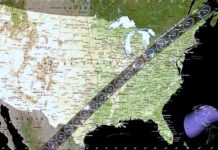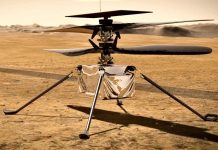
May 11 (UPI) — Images transmitted to Earth from NASA‘s Perseverance rover may show evidence that ancient rivers that once flowed over the planet ran much deeper, and flowed much faster, than researchers previously thought.
A composite image was created by piecing together hundreds of images taken with Perseverance’s Mastcam-Z instrument.
For two years, Perseverance has been researching in the area of the Jezero crater, which is home to a rippled area known to scientists as “the curvilinear unit,” which is believed to have once been the location of a series of waterways.
The “curvilinear unit” was previous observed from orbit, but Perseverance has given researchers an opportunity to observe the area more closely.
The image was taken on a geological structure within the curvilinear unit known as “Shrinkle Haven” to researchers.
A second composite image, taken about a quarter mile from “Shrinkle Haven” shows a hill dubbed “Pinestand” by scientists, along with a series of ripples in the foreground.
The scientific consensus is that the ripples at “Shrinkle Haven” and “Pinestand” were created by water, but there is uncertainty over how substantial the water flow was.
“We do see deposits like this on Earth, but they’re never as well exposed as they are here on Mars. Earth is covered in vegetation that covers these layers,” said Michael Lamb, a river specialist who works with the Perseverance science team.
The ripples in the image are also believed to have been worn down by wind over millions of years.
“The wind has acted like a scalpel that has cut the tops off these deposits,” said Lamb.
“Those indicate a high-energy river that’s truckin’ and carrying a lot of debris. The more powerful flow of water, the more easily its able to move larger pieces of material,” said Libby Ives, of NASA’s Jet Propulsion Laboratory, which operates the Perseverance rover.
In addition to observing geographical formations on the surface of Mars, Perseverance is equipped with a ground-penetrating radar system, the Rader Imager for Mars’ Subsurface Experiment, that can observe geographical formations below the planet’s surface.
Future NASA missions will collect samples that have been gathered by Perseverance and return them to Earth.






